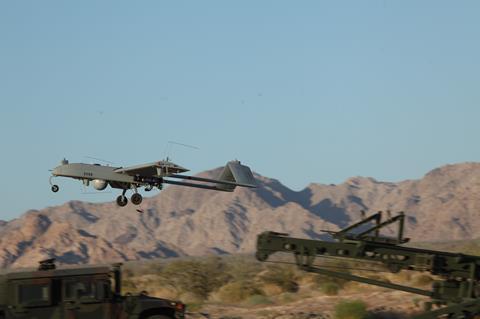Seeking a new design replacement for the currently serving Textron RQ-7B Shadow uncrewed aerial vehicle (UAV), the US Army has winnowed the field of competitors down from five bids to just two.
The army on 26 September said it has awarded second-stage contracts to Textron and Griffon Aerospace in the Future Tactical Uncrewed Aircraft Systems (FTUAS) rapid prototyping programme – with the winning design succeeding the RQ-7B.

“The FTUAS is the army’s premier vertical take-off and landing [VTOL] uncrewed aircraft modernisation effort,” says the army’s aviation procurement office.
The RQ-7B Shadow UAV currently provides surveillance, reconnaissance and target acquisition support to the army’s ground combat units, known as brigade combat teams.
The programme aims to build on that capability with greater flexibility and reduced logistical footprint, particularly by eliminating the RQ-7B’s pneumatic launch catapult.
“FTUAS will revolutionise the way our soldiers fight and win wars by providing enhanced reconnaissance, surveillance and target acquisition, with unparalleled speed and agility,” says Colonel Danielle Medaglia, UAS project manager.
The latest development in the FTUAS programme marks the elimination of bids from Northrop Grumman and Sierra Nevada. AeroVironment’s design was eliminated in May.
Requirements for FTUAS designs include runway independence, point take-off and landing – also known as VTOL – and a rapidly deployable capability. The goal of the new aircraft is to improve the ability of ground troops to “collect, develop and report actionable intelligence”, according to the army.
The service also notes the FTUAS designs must be able to operate in environments lacking GPS navigation capabilities.
Military strategists expect widespread use of GPS jamming technologies in any future conflict against near-peer adversaries such as China or Russia.
The final FTUAS design is to operate at low to medium altitudes and include capabilities such as modern data links, electro-optical and infrared sensors, infrared-laser target designation, laser range finding, data encryption, manned-unmanned teaming technologies and the ability to operate autonomously, the army says.












































